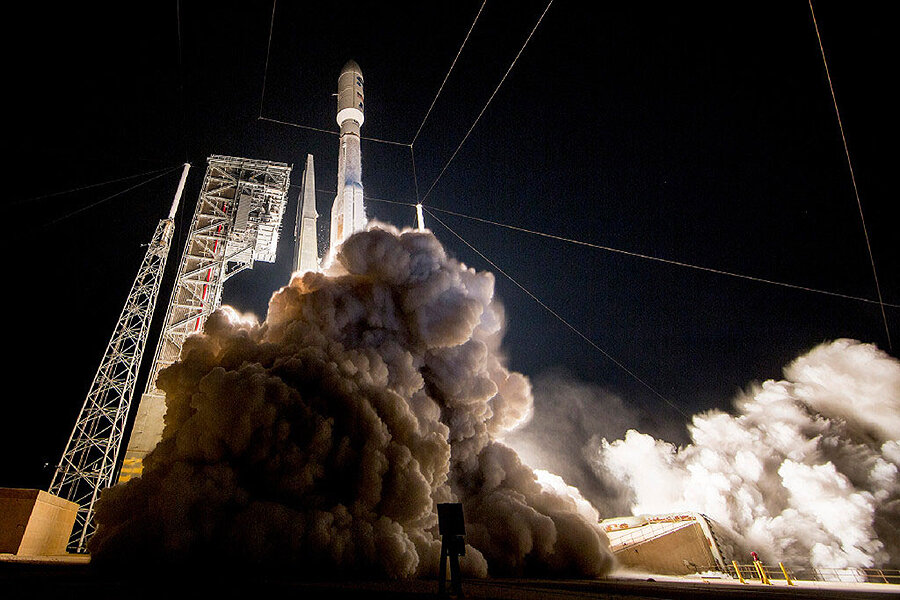With satellite launch, US has new eyes to watch for missile threats
The US military now has a fresh set of eyes on an unstable world.
At 7:42 p.m. EDT Friday, the Air Force’s GEO-3 surveillance satellite was launched from Cape Canaveral in Florida. The Atlas V rocket carried the latest satellite to join the GEO-1 and GEO-2 satellites – launched in 2011 and 2013, respectively – in geosynchronous orbit. From this vantage point, 22,300 miles above a fixed point on Earth, it will use infrared sensors to watch for missile launches.
Together, these three satellites, along with two older ones in different orbits, make up the Space-Based Infrared System (SBIRS), the latest hardware in a global surveillance system that has been evolving since the early days of the cold war. Its mission: detect missile launches around the world, and notify US forces in time for them to respond.
Since it was approved in 1996, the cost of SBIRS has swelled from $5.2 billion to almost $19 billion. And with three more GEO satellites planned, that price tag may rise even more. But the system’s architects insist that it’s needed to keep the Unites States safe from potential missile attack.
“The Space Based Infrared System is considered one of the nation’s highest priority space programs and is designed to provide global, persistent, infrared surveillance capabilities to meet 21st century demands in four national security mission areas,” Lockheed Martin, which built the satellite, says in its Mission Overview. Those four areas include “Missile Warning,” “Missile Defense,” “Technical Intelligence,” and “Battlespace Awareness.”
The military can set this broad mission for GEO-3 thanks to its hardware. The satellite’s two infrared sensors work independently, meaning that while one focuses on a particular region the other can scan an entire hemisphere.
When either sensor sees an unusual blip of heat, the military’s National Air and Space Intelligence Center can check it against a database of “heat signatures” created by a wide range of missiles and other military hardware.
The greater coverage afforded by GEO-3 will speed this process up, making for faster detection of missile launches and prediction of their direction. Military planners hope that this will increase the effectiveness of missile-defense systems, such as the THAAD batteries in Guam.
Beyond the system’s core mission of missile defense, SBIRS data has also been used to investigate the July 2014 downing of Malaysian Airlines Flight 17 by insurgents in Ukraine, and the disappearance of MH370 in March of that year, according to Aviation Week’s Amy Butler.









